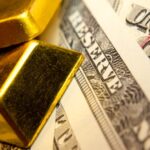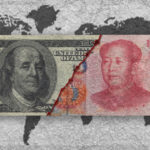Weekly Market Report 02/21/12
This week’s Market Report provides you with an update on the precious metal markets and the reasons why we are about to see a major break-out move in gold.
GOLD
Last week Gold was back on the winning track. Gold has been up six out of the first seven weeks of 2012, closing on Friday at $1,725.90 per ounce, and more importantly, staying above that important psychological $1,700 support level the past 18 trading days. I believe that all the elements are now in place for a Gold break-out move from the current $1700/$1760 trading range. This move will happen very soon. There will be a short pause when it breaks into the $1,800 level, and then we are heading for new highs before the summer.
What are the key elements to the coming gold move?
1) More Global Quantitative Easing (monetary stimulus) is on the way
Both Great Britain and Japan have recently announced massive increases in monetary stimulus programs. The Eurozone countries have currently given problem banks that are holding sovereign debt massive injections of euros, and are also preparing massive amounts of monetary assistance for Greece, Spain, Italy, and Portugal. While in the U.S., more than a majority of Federal Reserve Open Market Committee Governors favor another round of monetary stimulus (QE3) to keep our economic recovery on course within the United States.
Over the weekend, China cut its required bank reserve ratios, joining a number of central banks in relaxing monetary policies to promote economic growth. Greece’s current debt crisis was dealt with on Tuesday morning as Euro zone finance ministers agreed to the 130-billion-euro ($172 billion) Greek rescue package.
Governments are loosening bank reserve requirements to make lending easier, as well as printing trillions of Dollars, Euros, and Yen to pay down debt and stimulate economies, driving down the value of paper money versus gold.
2) Investment demand for Gold is increasing from Central Banks and the public.
2011 was a record year for physical demand for gold investment products and that demand escalated more and more as we approached year end.
Global demand for gold in 2011 rose to 4,067.1 tonnes, worth an estimated US$205.5 billion - the first time that global demand exceeded US$200 billion and the highest tonnage level since 1997, according to the World Gold Council’s Gold Demand Trends. Of the total 4,067 tonnes 2011 world gold demand, 1,703 tonnes (41.8%) came from China and India. Last week the World Gold Council (WGC) provided details on the 2011 World’s demand from Central Banks Gold purchases. In their report, the WGC disclosed that the World’s Central Banks purchased 440 tonnes of Gold in 2011, a 471% increase from a record high of 77 metric tonnes in 2010.
Physical demand for coins is now outpacing jewelry demand and many countries are seeing dramatic growth in public buying of gold sovereigns and popular European and U.S. gold coins.
3) The perception of Gold as a mainstream investment has changed.
10 years ago, investors would buy gold as a potential inflation hedge or for asset diversification. Only a small group of U.S. financial planners and money managers (less than 5%) would even consider gold as part of an investment strategy, as it was called a non-productive assets class. The few financial advisors that did allow gold into an investment portfolio would limit it to only 5-10%.
Now, high profile investment advisors (Soros, Paulson, and others) proudly share their gold investments. Gold is now in the mainstream media, with its daily price broadcast on major radio and T.V. stations.
Gold is now considered as a hedge against debasing currencies.More and more financial advisors and money managers that I work with are recommending gold and silver as part of a balanced investment portfolio with a range from 15 to 25% commitment. Many financial professionals now feel that with a consistent 10 year track record of appreciation, the risk element for gold investments has been minimized.
Fourteen out of our fifty States have passed (or have pending) legislation that allows gold and silver coins to be used as currency in commerce transactions. Both houses of Congress have proposed legislation that would re-introduce a gold standard.
4) Low global interest rates on bank CD’s, Corporate, and Government Debt
Global interest rates have fallen to 20 year lows in Europe, Asia, and the United States.
Earning a fixed return of less than 2% on a multi-year AA government debt, versus an average return on gold over the past 10 year of 20%, gives gold the advantage for income focused investors. Plus, the U.S. Federal Reserve has virtually guaranteed that interest rates will remain low for the next two years.
An interesting story is unfolding in the Middle East.
Nicolas Karout, a gold dealer in Damascus, Syria, reports that his patrons have stopped spending their money on frivolous things such as gold bangles or earrings. Instead, he is seeing a roaring trade in gold British Sovereigns. "In the past 10 months I have sold more gold coins than my father and grandfather sold in their whole lives," he says with a laugh. "Syrians are not idiots, they know their interests and they know when there are security and economic problems; they know the value of the paper money will decrease and they go to gold, which has always been a refuge." Gold coins are ferreted away under a pillow or in a safe, far away from banks that could become the target of further sanctions or seizures. The Syrian pound exchange rate was 47 to the US dollar in March last year when the first protests against President Assad began. Now, the black market exchange rate is about 70 Syrian pounds to the dollar. I have heard similar reports from gold dealers in Iran and Egypt.
Are believers that a Gold Standard is good for the United States, Anti-Government?
At a recent press conference given by the FBI, Reuters reported that an FBI Spokesperson stated he believes that gold standard believers are anti-government. He said, “These extremists, sometimes known as ’sovereign citizens’, believe they can live outside any type of government authority. The extremists may refuse to pay taxes, defy government environmental regulations, and believe the United States went bankrupt by going off the Gold standard.”
My clients and friends know that this couldn’t be further from the truth. U.S. Citizens that believe in a Gold Standard are not Anti-Government; they are simply saying they want the government to stop excess spending. Currently, the government can print as much currency as it wants, whenever it wants, which helps perpetuate excess government spending. It is fiscally much more responsible to base the amount of Dollars printed on the amount of Gold the Government owns. This fiscal responsibility would stop the excess spending our government has created, which currently has the U.S. Debt on its way to a record $16 Trillion.
There is a common misunderstanding of what a Gold Standard really is. A Gold Standard simply means the ability to convert currency (US Dollars) into gold at an official government rate. The US had gone off of the gold standard on August 15, 1971, when the rate was 35 U.S. Dollars to 1 ounce of gold. With the US debt continuing to grow at a record pace, many investors and presidential candidates have been attributing the excessive debt buildup to the shift away from the gold standard. This will continue to make gold more and more valuable as more economic stimulus plans continue to be created.
SILVER
Silver, like gold, has shown excellent base building for the past 18 trading days. For 4 of the past 18 trading days, silver traded below $33, but closed above $33 per ounce on excellent volume. Although Silver and Gold both closed above their respective support levels during the past 18 trading days, they had different up and down days. Gold’s strength was primarily based on the weakness of the U.S. Dollar versus the Euro and Yen, while Silver showed increases when the news showed strength in the U.S. or world economies.
Recommended investment commitment and diversification:
Precious Metal commitment: Minimum of 35% of investment capital
Diversification: Gold 60%, Silver 30%, Platinum & Palladium 10%
Diversification includes long term investment quality rare coins and short term bullion products
It’s time to purchase U.S. Gold coins
There is now a unique opportunity to purchase PCGS/NGC certified Brilliant Uncirculated Pre-1933 U.S. Gold coins at record low premiums over the spot gold price.
Over the past three years, gold has increased 96%, based primarily on Central Bank and Asian buying, while the U.S. demand was negatively affected by the recession. This caused the normal premium that certified Brilliant Uncirculated U.S. $10 and $20 Gold carried over the gold spot price to decline substantially. This has only happened three times in my fifty plus year career. The premium went back to normal levels within 1 to 2 years. Therefore, we have an excellent opportunity to pick up U.S. investment quality gold coins at only 20% to 40% over spot, depending on type and grade, ranging from MS62 to MS65. As the U.S. economy recovers over the next year, I expect the premium, along with the gold price, to increase. Please email David or myself for the best values.
January 2012 CoinStats Available
My numismatic CoinStats report is the best investment tool for rare coin investors. CoinStats is an in-depth statistical analysis of popular rare coin series which allowsyou to identify the best values in certified rare coins. I am proud to offer this unique and informative tool exclusively for our clients. The January 2012 CoinStats update is now available for $20 Gold Saint Gaudens, $20 Gold Liberties, and the Morgan & Peace Silver Dollar series.
While the collector coin market continues to be weak,high end gold and silver rarities (over $50,000 each) did set record prices at last month’s FUN Heritage Auction. The best values and opportunities are in the middle area ($3,000 to $49,000) where the market is still undervalued. The CoinStats Report provides a list of my recommended certified US gold and silver coins which are listed on the best value page. These are not the overly hyped modern issue bullion coins or low grade circulated coins, they are PCGS/NGC Certified MS63 or higher gold and silver U.S. rare coins, dated prior to 1936, that have a proven track record of appreciation.
For the latest CoinStats analysis, just put CoinStats in the subject line and email me which series you would like to see.
REMEMBER THE BLOG
If you want to be updated on what is happening in the gold, silver, and rare coin markets any weekday, our company offers a daily blog Monday to Friday at www.stupplerblog.com
All statements, opinions, pricing, and ideas herein are believed to be reliable, truthful and accurate to the best of the Stuppler & Company’s knowledge at this time. Stuppler & Company disclaims and is not liable for any claims or losses which may be incurred by third parties while relying on information published herein. Individuals should not look at this publication as giving finance or investment advice or information for their individual suitability. All readers are advised to independently verify all representations made herein or by its representatives for your individual suitability before making your investment or collecting decisions.






